Shape identification Normal Worksheets for Ages 4-5
7 filtered results
-
From - To
Explore our "Shape Identification Normal Worksheets for Ages 4-5" designed to engage young learners in recognizing and naming various shapes. These interactive, fun worksheets help children develop essential cognitive and fine motor skills through enjoyable activities that encourage independent learning. With colorful illustrations and age-appropriate exercises, kids will identify shapes like circles, squares, triangles, and more. Perfect for classroom use or at-home practice, our resources aim to foster a solid foundation in geometry and enhance critical thinking. Download, print, and watch your child thrive as they embark on their shape identification journey with confidence! Perfect for early education settings.
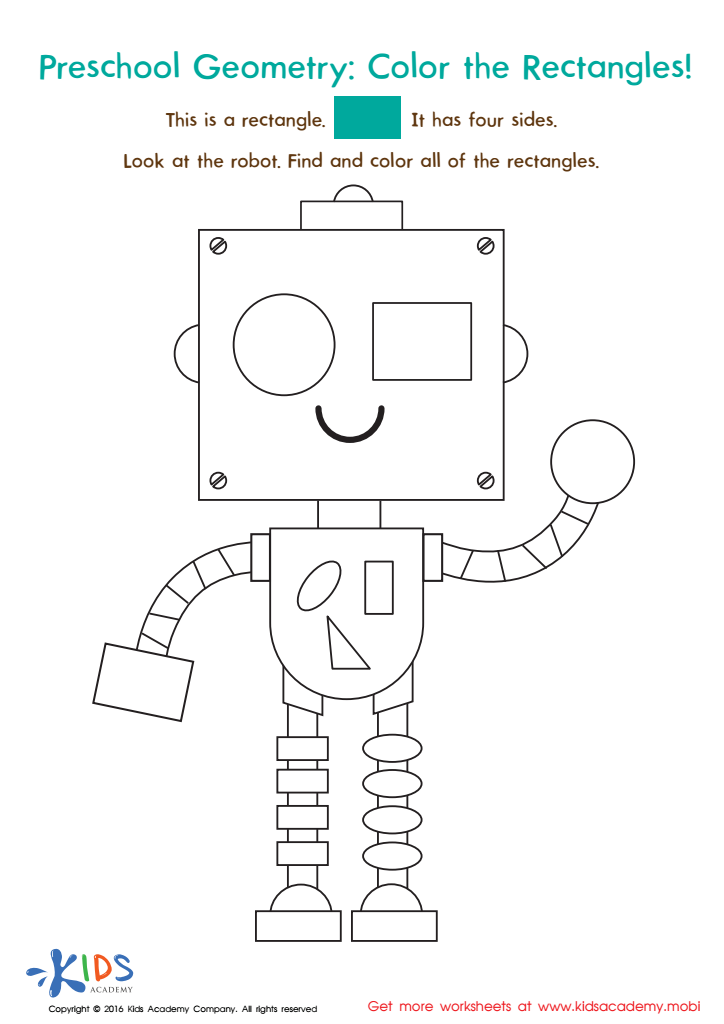

Geometry Worksheet
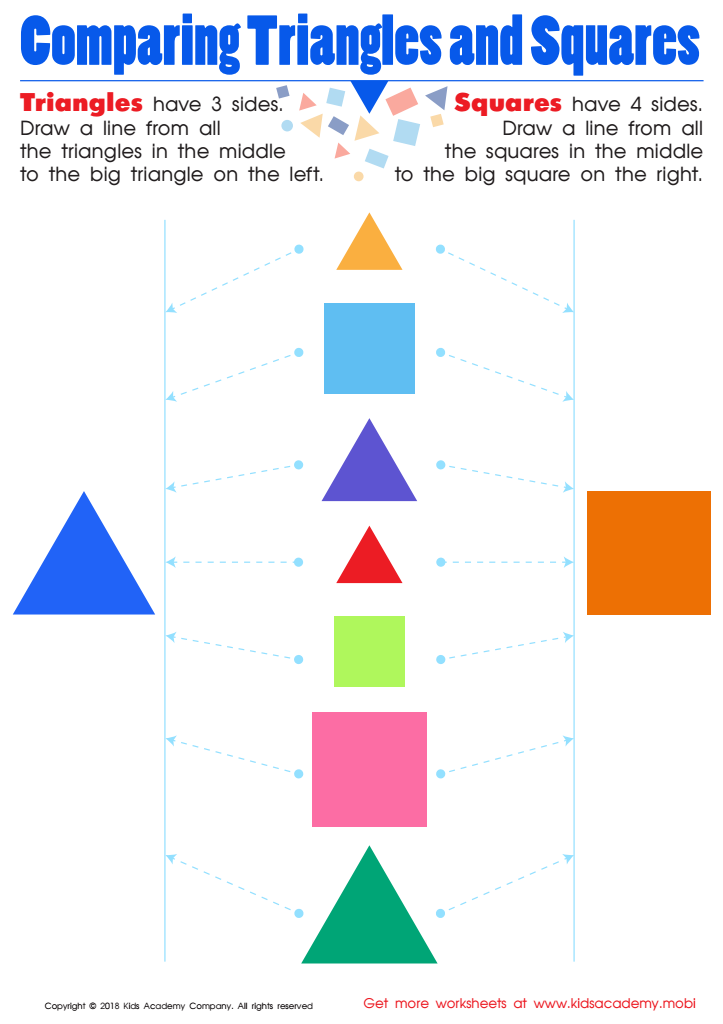

Comparing Triangles Squares Worksheet
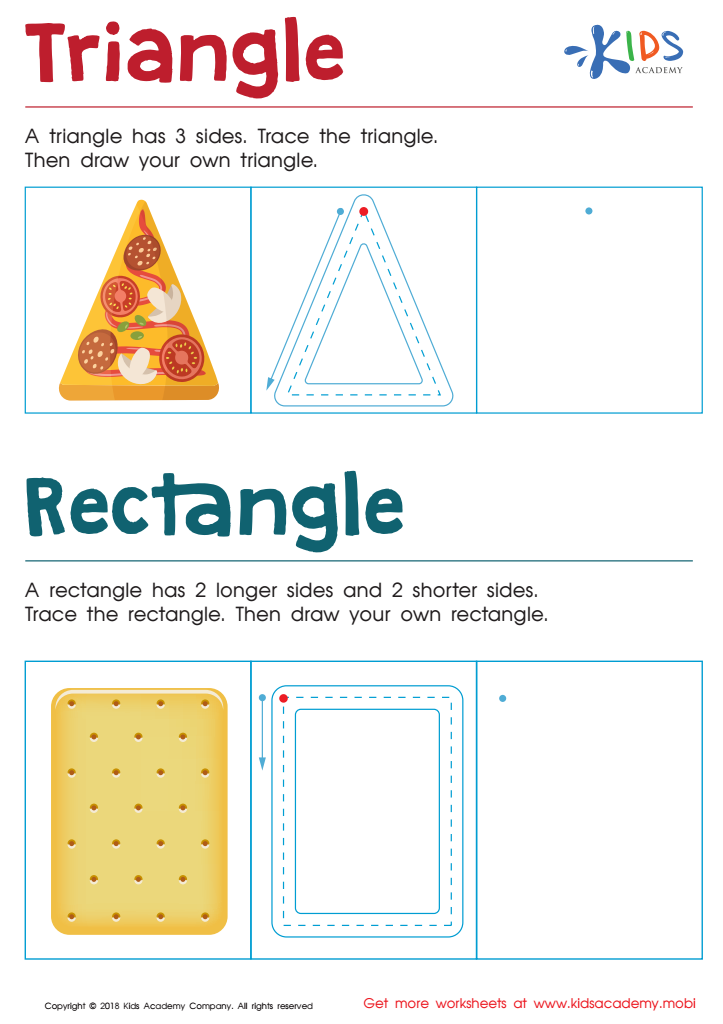

Triangle Rectangle Worksheet
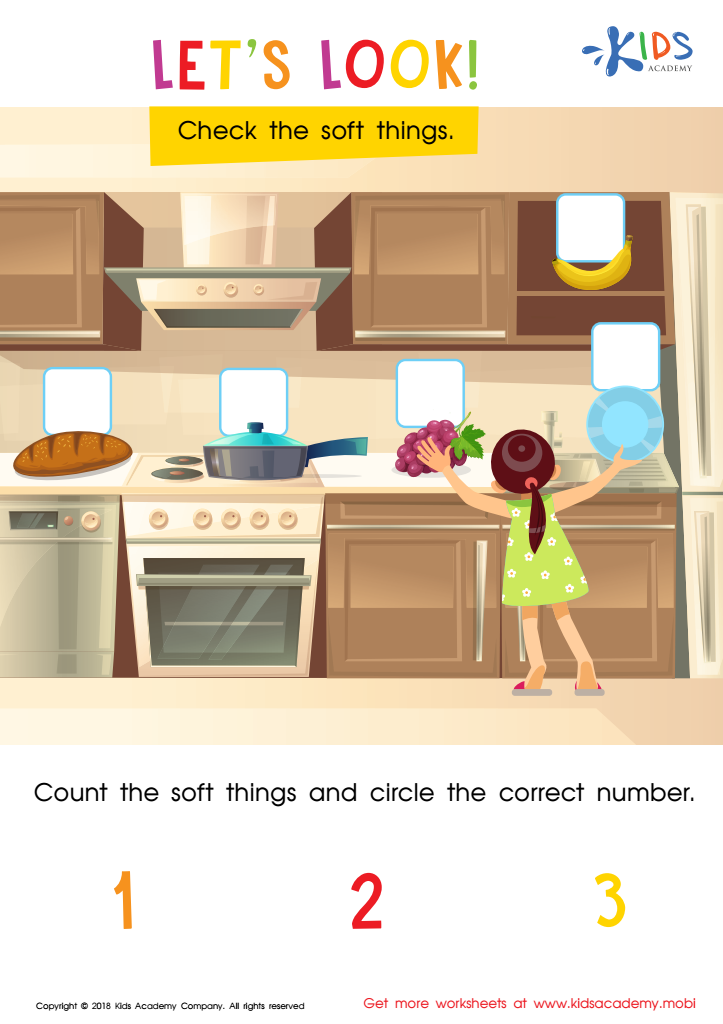

Let's Look! Assessment Worksheet


Which Doesn't Belong? Worksheet
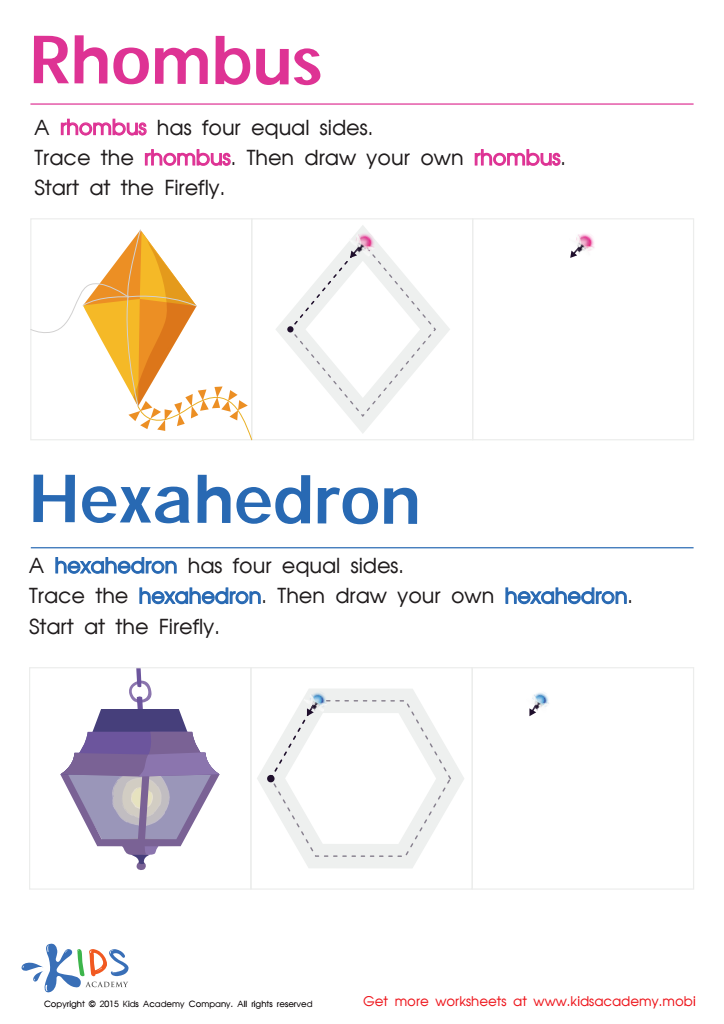

Draw a Rhombus And a Hexahedron Printable
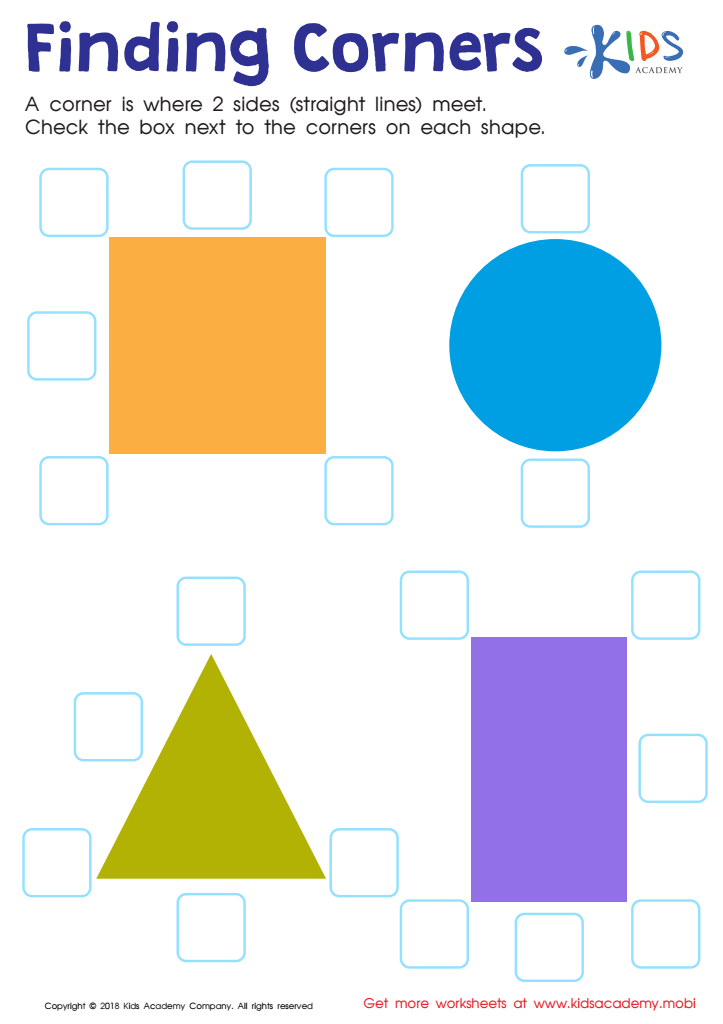

Finding Corners Worksheet
Shape identification is a foundational skill for children aged 4-5, making it crucial for parents and teachers to prioritize it in early education. Understanding shapes helps children develop spatial awareness and enhances their ability to recognize patterns, which are critical cognitive skills. This early exposure lays the groundwork for more complex mathematical concepts such as geometry, measurement, and fractions later on.
Moreover, shape identification promotes language development, as children learn to articulate the names, properties, and differences of shapes. This vocabulary expansion is essential for effective communication and literacy skills. Engaging with shapes also fosters fine motor skills; children manipulate objects like blocks and puzzles, reinforcing their hand-eye coordination.
Additionally, teaching shape identification supports critical thinking and problem-solving abilities. As children categorize shapes and predict their use in various contexts, they enhance their reasoning skills. Finally, learning about shapes incorporates fun, hands-on experiences that can deepen a child's interest in discovery and exploration.
By caring about shape identification, parents and teachers can contribute to holistic development in young children, setting a solid foundation for future academic success and everyday life skills.
 Assign to My Students
Assign to My Students



















